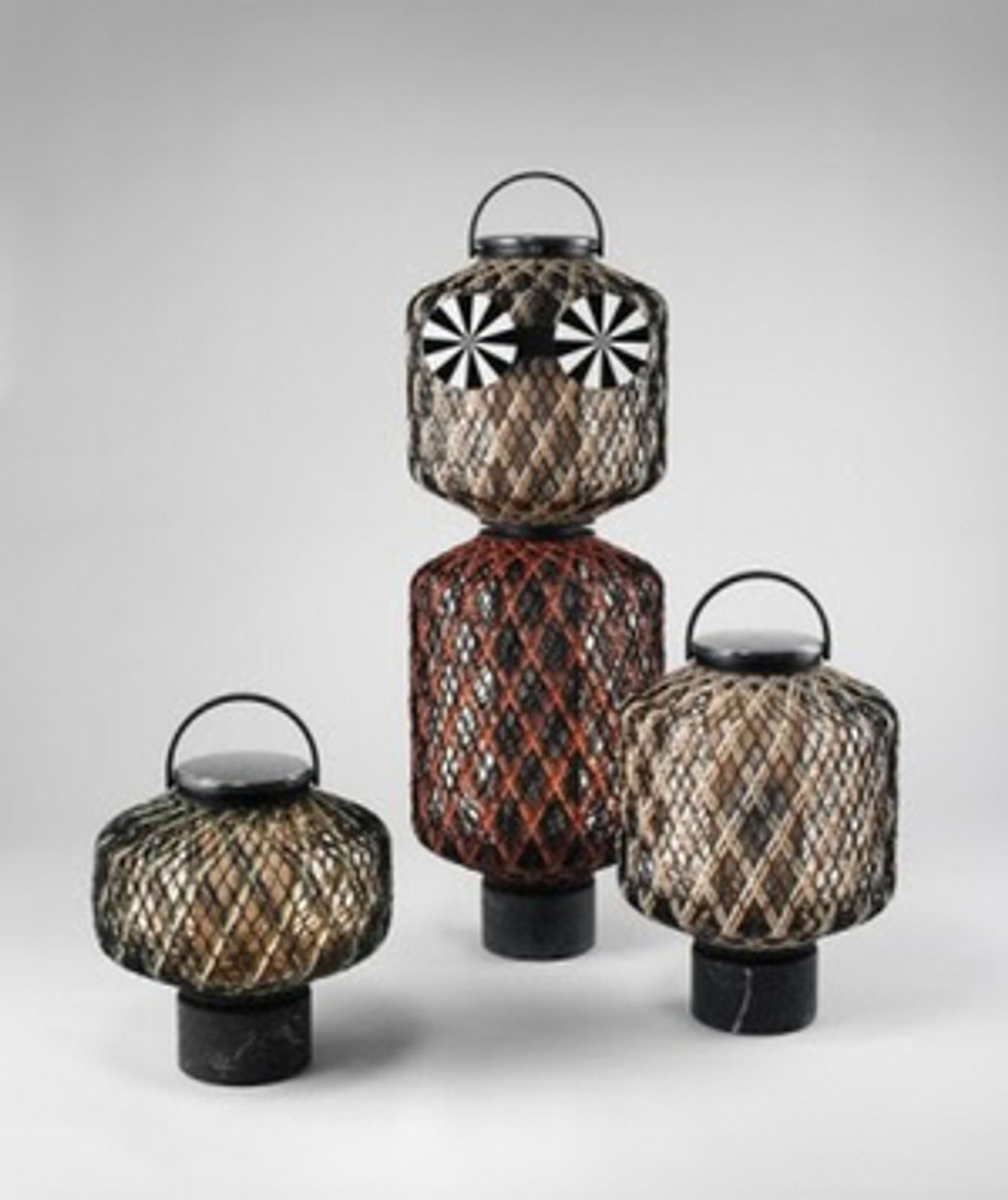High Museum to Present STEPHEN BURKS: SHELTER IN PLACE
The exhibition will present more than 50 works drawn from several of his key projects alongside a multifaceted new commission.

Debuting this fall at the High Museum of Art, "Stephen Burks: Shelter in Place" (Sept. 16, 2022-March 5, 2023) will survey the last 10 years of Burks' dynamic practice, which combines globally sourced handcraft with industrial design. The exhibition will present more than 50 works drawn from several of his key projects alongside a multifaceted new commission, also titled "Shelter in Place." This is the first major museum exhibition of Burks' work in over a decade, and it will demonstrate his holistic approach that unites art, architecture and design while synthesizing craft, community and industry.
"Shelter in Place" will explore ideas concerning domesticity during a time of worldwide upheaval, tackling the question of how we can design interiors to enable joyful living while empowering creativity. As an African American designer, Burks has forged a distinctive path by embracing the challenge to advocate for hand production as an innovative approach for industry, which is an important method he uses to interrogate the modernist trope of better living through design. In this way, his work reflects how designers have responded to recent global crises by redefining our relationship to our homes.
"Over the past two years, we have all developed new relationships with our homes and the objects that fill them," said Rand Suffolk, the High's Nancy and Holcombe T. Green, Jr., director. "At a time when our domestic surroundings have become more important to us than ever, we are excited to share Stephen Burks' work with our audience and invite them to consider how innovative, sustainable and thoughtful craftsmanship can impact our everyday lives while prompting us to think critically about the role of design in our society."
Burks' studio has been commissioned by many of the world's leading design-driven brands, including Cappellini, Dedon, Missoni and Roche Bobois, to develop collections that meld handcraft with industrial production. At the core of Burks' practice is a belief in design that is inclusive of all cultural perspectives. He works with craftspeople from around the globe to create beautiful and functional furniture, houseware, lighting and textiles, developing a new relationship between the object and the hand that places himself within the system of production.
Demonstrating the depth of his practice, the exhibition will include more than 50 works, organized into various relevant themes, including Craft as Collaboration, Modernist Orthodoxies, Weaving as Metaphor, and Environmental Inclusion. Also on view will be "Crafting Diversity," a new collaboration with students at Berea College in Kentucky that highlights the inclusive and innovative nature of Burks' design process while spotlighting an institution that has fostered a utopian, anti-racist culture.
A highlight of the exhibition will be the unveiling of the "Shelter in Place" commission, which emerged from discussions that began during the COVID-19 pandemic between Burks and the High's Curator of Decorative Arts and Design and exhibition organizer, Monica Obniski. As a designer for industry, Burks mostly works by responding to briefs, with little opportunity to imagine speculative futures for his practice; this project pressed him to develop alternative concepts by imagining new products for the home. The resulting project will present multiple radical concepts that arose during lockdown, including "Woven TV," which Burks designed as a lattice shell enveloping a TV, reminiscent of a time when early televisions were contained in larger furniture-like volumes. Burks imagines the "Woven TV" transforming as the user weaves mementos, decorative trimmings or even recycling to enliven the structure and add their mark, engaging in creative agency.
"Through this exhibition, and its related publication, I'm thrilled to shed light on an American designer who has developed a unique point of view during nearly 20 years in the field," said Obniski. "I think it is really important for our audiences to understand that architecture and design cross cultural and national boundaries. This is especially true for Burks' practice that examines how objects are made by bringing together diverse perspectives and talents. We are also excited for the opportunity to look ahead to where his designs may take us toward a more ethical and sustainable future."
"Stephen Burks: Shelter in Place" will be accompanied by a fully illustrated catalog, published by the High, featuring essays by Obniski, author and historian Glenn Adamson, and curator and critic Beatrice Galilee. Additional texts will include an interview with Burks by Michelle Joan Wilkinson, curator at the Smithsonian's National Museum of African American History and Culture, and an introduction by Spanish architect and designer Patricia Urquiola.
The exhibition will be presented in the Special Exhibition Galleries on the Second Level of the High's Stent Family Wing.
About Stephen Burks
Burks (American, born 1969) is one of the most recognized American industrial designers of his generation. Independently and through association with various nonprofits, he has worked as a product development consultant in close collaboration with artisans and craftspeople throughout the globe. His Brooklyn-based studio, Stephen Burks Man Made, is deeply invested in the transformative power of craft techniques that challenge the limits of new technologies within industrial production. Their projects include furniture, installations, lighting, packaging and product design for some of the world's leading design-driven brands. Burks studied architecture at Columbia University's Graduate School of Architecture, Planning and Preservation (GSAPP) and product design at Illinois Institute of Technology's Institute of Design. He is the recipient of several awards, including being the only African American to win the Smithsonian Cooper Hewitt National Design Award in Product Design. In 2019, he became the first Harvard Loeb Fellow in product design and was recently adjunct assistant professor of architecture at Columbia University's GSAPP.
Videos

